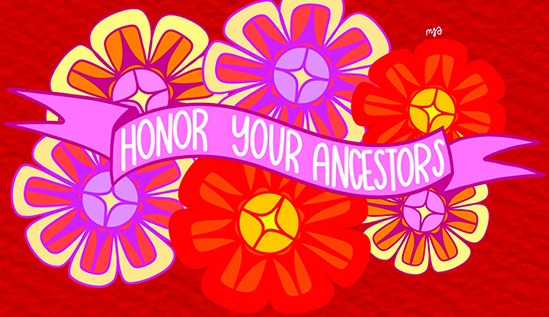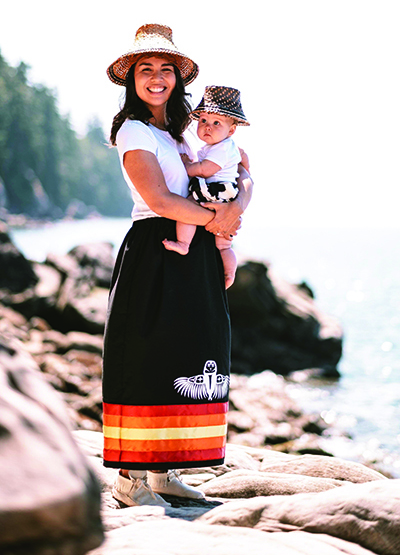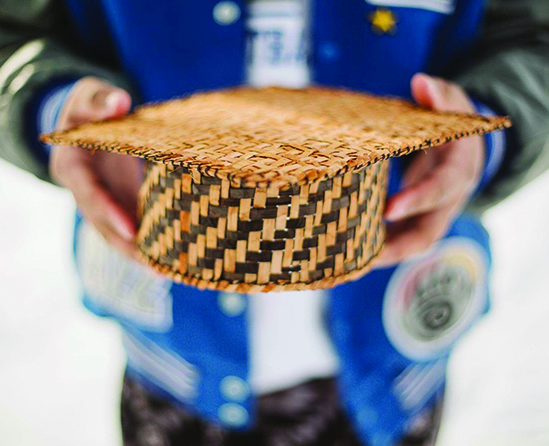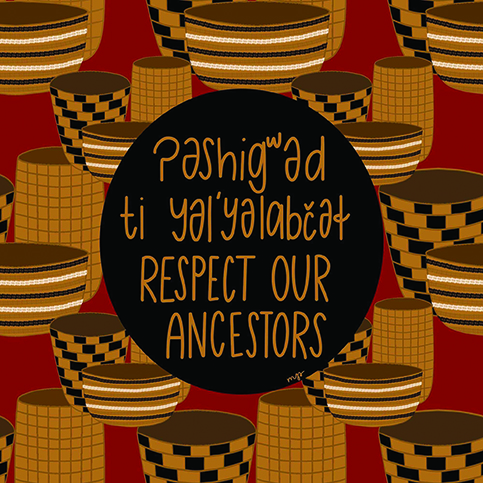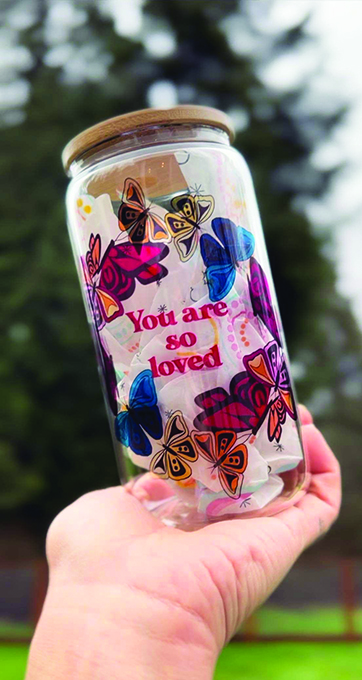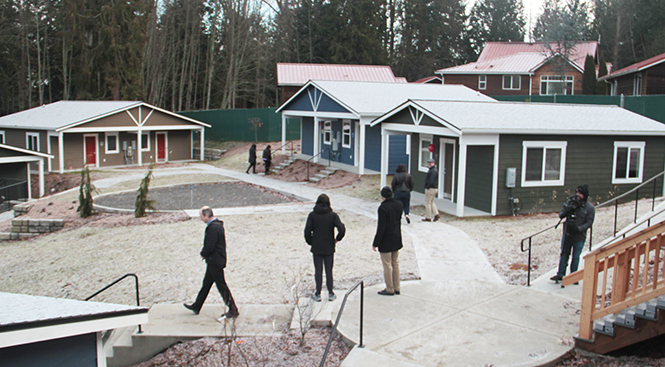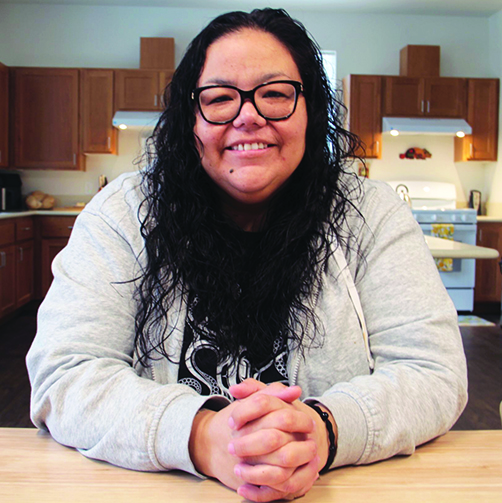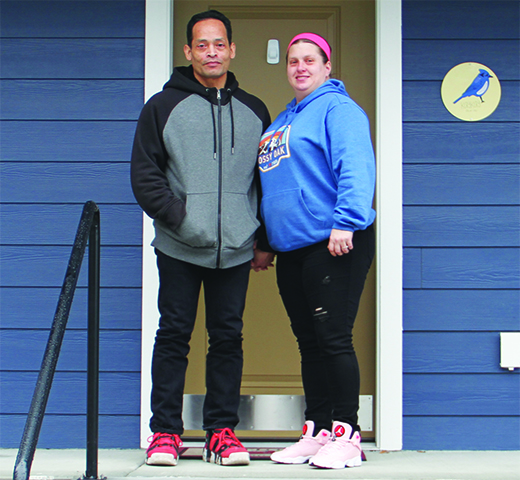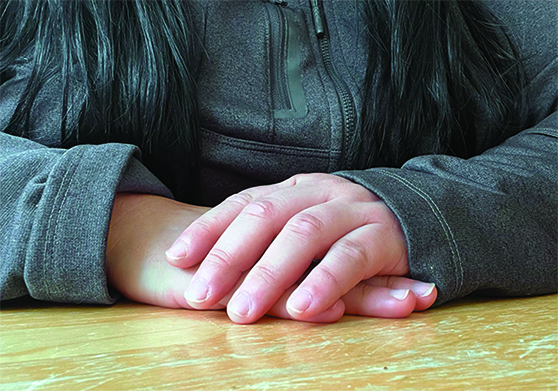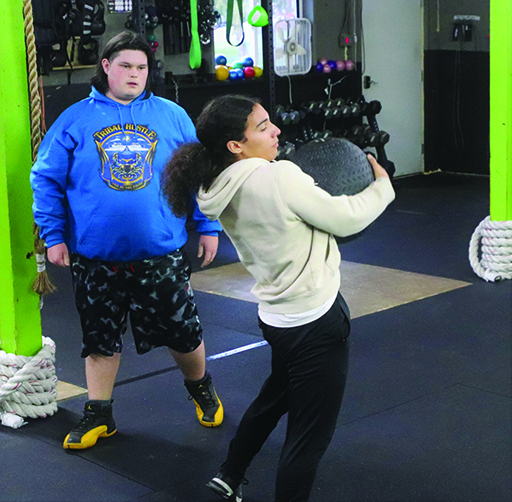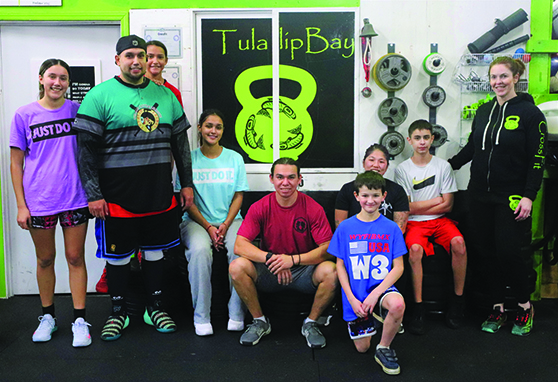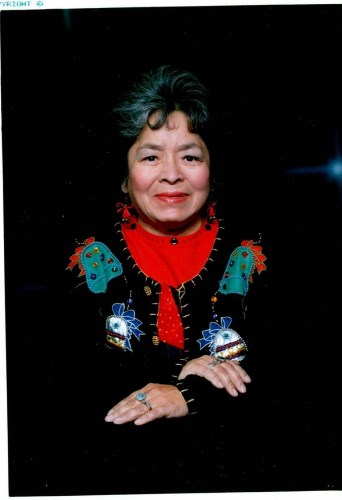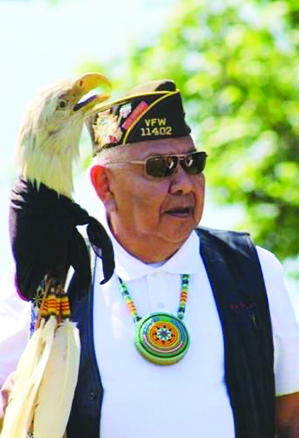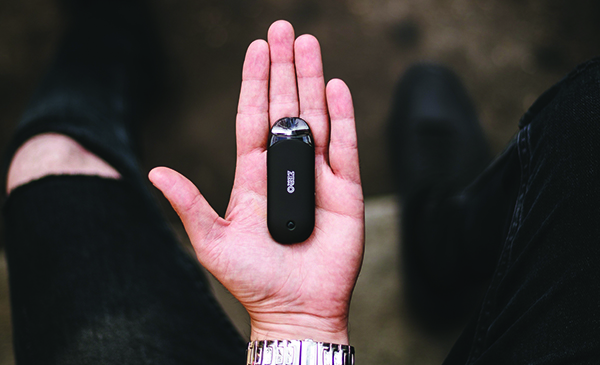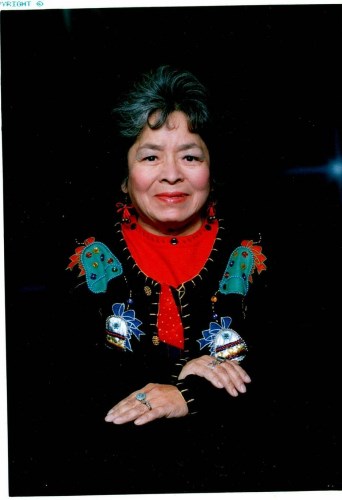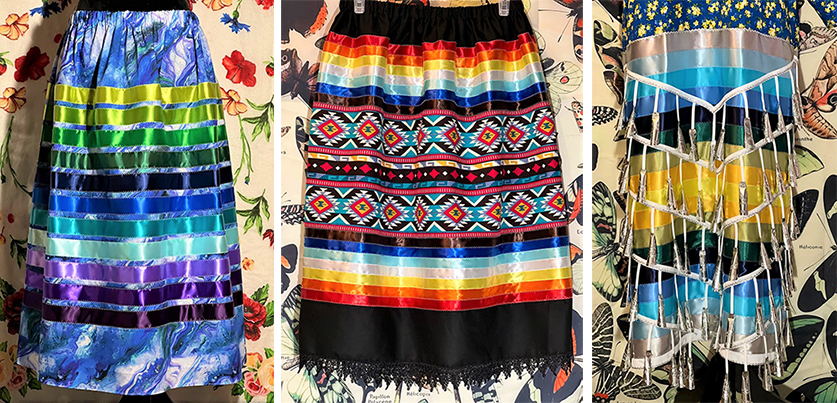
By Micheal Rios, Tulalip News
Over the past decade, there’s been a shimmering surge in the popularity of Native American ribbon skirt making. These skirts, which are decorated with vibrantly colored ribbons and patterns that hold spiritual and cultural significance, have become an important symbol of Native identity and resilience. For Native American women, ribbon skirts are not only a bold fashion statement but also a powerful tool for cultural reawakening, community building, political activism, and economic empowerment.
At the heart of the ribbon skirt movement is a deep connection to tradition and culture. Ribbon skirts have been worn by Native women for generations and hold deep spiritual significance for many tribal communities across Turtle Island. They were often worn for important occasions such as powwows, weddings, potlatches, and other ceremonies.
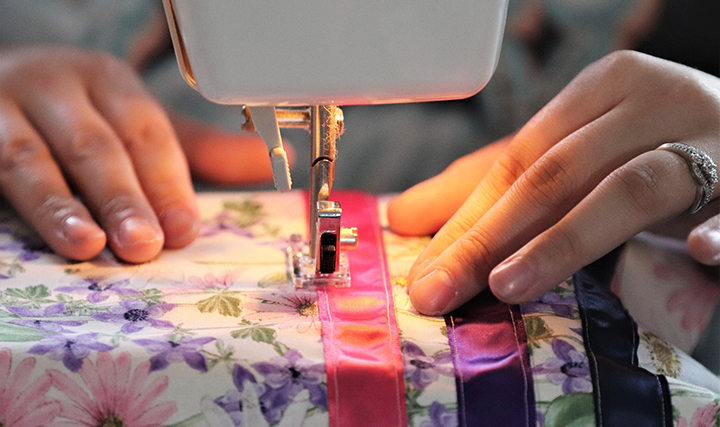
Today, a new generation of modern matriarchs are literally sewing together past teachings with a shared identity of culture that isn’t afraid to create new traditions. Such is the case with owner and operator of Morning Star Creations, Nina Gobin.
“There’s a lot of Natives reconnecting to the culture nowadays because being an Indigenous person in 2023 is much more welcoming than it was for past generations,” said Nina. “Many of our ancestors feared the consequences if they didn’t hide their culture, but now we’re in an era of empowering diversity. Native people can wear something like a ribbon skirt or ribbon shirt and be told, “Oh wow. That’s badass!” just by being proud enough to represent who they are and where they come from.”
The inspiring 23-year-old Tulalip tribal member learned the fundamentals of ribbon skirt making from her regalia making teacher Lisa Powers while attending Northwest Indian College five years ago. Afterwards, she received additional guidance from locally renowned ribbon skirt maker Winona Shopbell. Nina used the teachings of Lisa, Winona, and countless YouTube sewing tutorials to create a ribbon skirt style all her own.
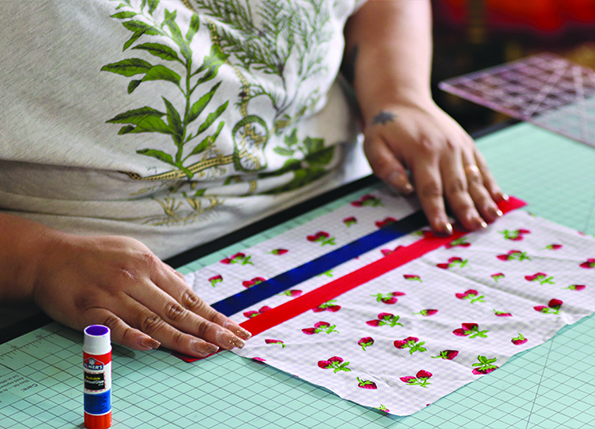
With each hand-made skirt she made and sold came a boost to her confidence and belief in ability to create something that was equal parts culture, fashion, and art.
The rise of ribbon skirt making has led to economic empowerment for Native women, such is the case with Nina, who can circumvent typical manufacturing methods by creating these ribbon wonders in the comfortable environment of home. By creating and selling their skirts online or at local vendor markets, they are able to support themselves and their families while sharing their culture with others.
Sharing the gift of her skillset she developed from making and selling 200+ skirts over the last few years is a traditional teaching Nina takes seriously. Which is why she committed a weekend in February to welcome Native women willing to learn the basics of ribbon skirt making into her home and primary manufacturing space.
Surrounded by fabric galore, ribbon that spanned the color spectrum, and all the sewing essentials they needed, a group of local women received a crash course in ribbon skirt 101. Their instructor, Nina Gobin.
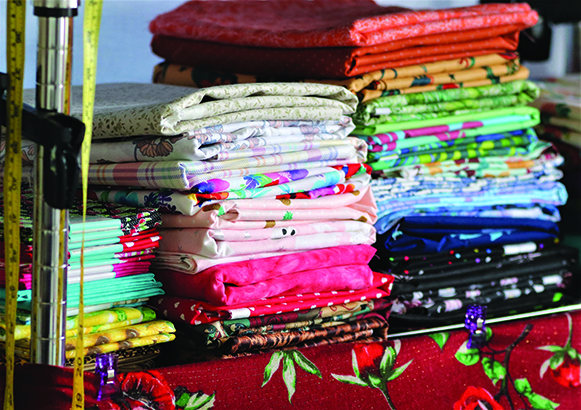
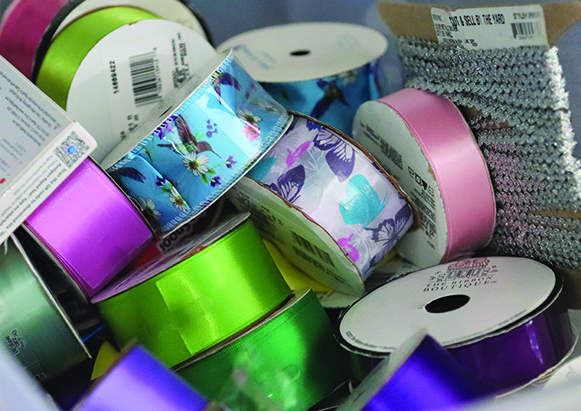
“Honestly, this is the first time I’ve ever sewn anything in my life,” shared 31-year-old Britney Craig as she intently sewed metallic pink ribbon onto her floral-patterned skirt. “Learning to make ribbon skirts is something I’ve wanted to do for a long time. I actually bought a sewing machine five years ago and was intent on learning then, but life happened and I wasn’t able to. When I heard Nina was offering this class, I was so thrilled and jumped at the opportunity.”
Throughout their day together spent sewing machine troubleshooting, learning how to undo simple mistakes and creating vibrantly colored youth skirts, the ladies discussed the significance of ribbon skirts to the greater culture at large. Like how the use of ribbons in the skirts reflects the importance of color and design in the variety of Native culture, from coastal and woodland to pueblo and plains, with each ribbon symbolizing a specific meaning or purpose.
The group also discussed how cool it is to see high profiled Native women like Secretary of the Interior Deb Haaland and Lieutenant Governor of Minnesota Peggy Flanagan wear ribbon skirts on the national stage. Showcasing the strength of the ribbon is also something Tulalip’s own Deb Parker and Theresa Sheldon have routinely been intentional about when they are visiting various state and tribal delegations seeking support for their boarding school healing coalition.
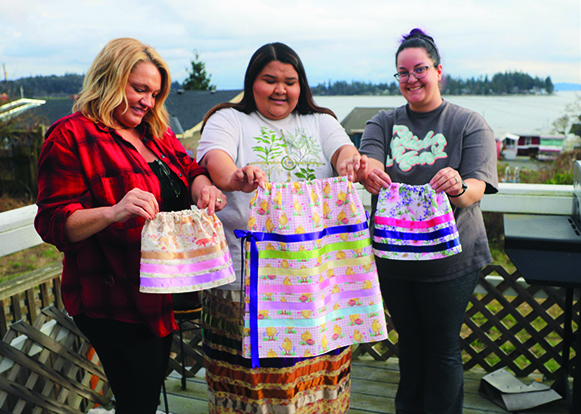
“I like how it’s becoming mainstream for all the gals to wear ribbon skirts,” said Teresa Jira while cutting her assortment of ribbon to the desired length. “These skirts are basically a representation of our shared culture and are no longer designated for ceremony only, but instead is like an everyday norm to empower girls and women all across the country. And that’s the point because when the general public sees our culture in the mainstream, whether its expressed through cedar or wool or ribbon, it’s powerful representation that we’re still here, adapting and thriving.”
The rise of ribbon skirts has also become a symbol of political activism for Native women. They have been worn at protests and rallies, representing the strength and resilience of Native women in the face of ongoing struggles for social and environmental justice. By wearing ribbon skirts, they are asserting their presence and voice in the world, while fiercely standing up for the rights of their communities.
Overall, the ribbon skirt movement is a powerful expression of culture and identity. For Tulalip women specifically, the act of making and wearing ribbon skirts is a way to honor their traditions, connect with their community, and assert their presence in the world. As this movement continues to grow and gain momentum, the ribbon skirt will continue to serve as an important symbol of Native identity.
“Ribbon skirts represent a good balance of traditional practices and the ability to adapt and evolve with changing times,” explained Nina. “A good way to view them is through the same culturally artistic lens we use to view painters, beaders, weavers, and carvers. Our Native artists all have their own unique style that continues to adapt to new technologies and changing buyer markets. The styles and colors and textures may vary, but at the end of the day we all are trying to represent our people and culture in a good way.”
